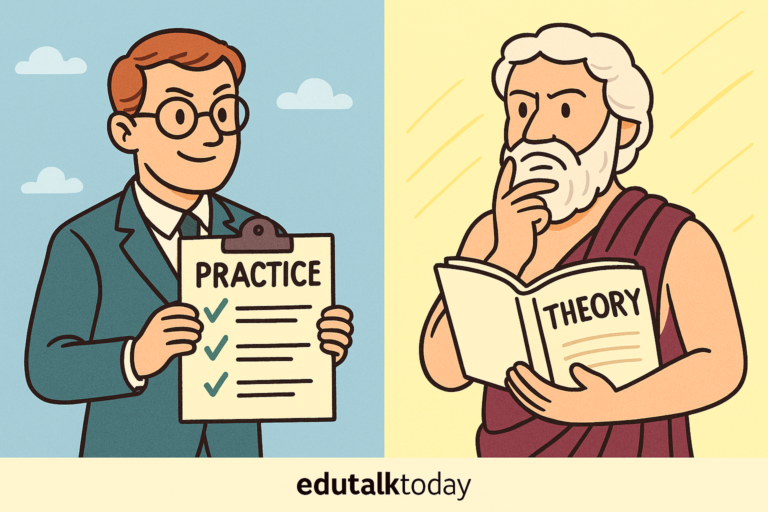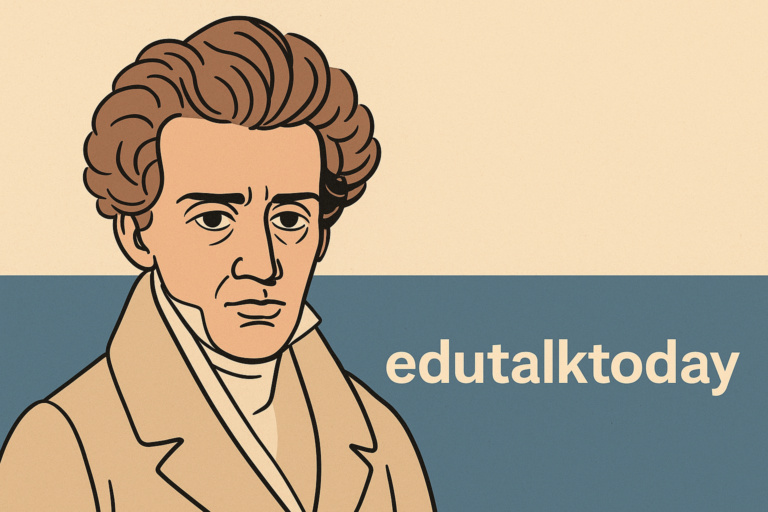What is A Pragmatic Approach to Personal Conflicts

Most of the time when we read about conflict resolution, it sounds like it was written in a psychology textbook or a corporate HR manual. It’s all very neat on paper: stay calm, listen actively, find common ground. But in real life? People get defensive, emotions spike, power imbalances quietly shape the room, and suddenly the “best practice” you memorized feels like it belongs in another universe.
That’s why I’ve been fascinated by pragmatic approaches—not what should work in theory, but what actually works when the stakes are messy, when egos are bruised, or when you just don’t have the luxury of a perfect outcome. My goal here isn’t to throw out the theory you already know—it’s to add a layer of real-world nuance that I’ve seen shift conflicts from dead ends into opportunities for progress.
Seeing Conflict for What It Really Is
Here’s the trap I see a lot of smart people (myself included, at times) fall into: we treat conflicts as puzzles with solutions, rather than dynamic processes with moving parts. The reality is that conflicts aren’t tidy. They’re a cocktail of unspoken needs, hidden fears, social hierarchies, and sometimes just bad timing. If you’ve ever walked into a room where the tension was so thick you could cut it with a knife, you know what I mean—the spoken words are rarely the full story.
Why emotions always sneak in
Even among experts who pride themselves on logic and data, emotions sneak through the cracks. Think about a high-stakes project review: one engineer questions another’s design, and instead of debating the facts, the conversation veers into defensiveness. It’s not really about the design at that point—it’s about identity and competence.
Once that switch flips, your conflict isn’t about technical merit anymore, it’s about self-worth. I once sat in a meeting where two leaders argued for an hour about budget allocations, but the undercurrent was that one felt sidelined in decision-making. Until that feeling was acknowledged, no amount of rational argument was going to land.
The invisible weight of power
Then there’s power. Not always in the overt “boss vs. employee” sense, but the subtle dynamics that shape how bold people feel about voicing their side. In family conflicts, the power might come from age or tradition.
In organizations, it could be seniority, reputation, or even who controls the calendar. Here’s the kicker: conflicts that ignore power imbalance often spiral into frustration. Imagine a junior employee trying to challenge a director in a meeting—the director doesn’t even see the exchange as a conflict, but the junior employee might stew on it for weeks. If we don’t account for that asymmetry, we miss half the equation.
Symptoms versus root causes
And let’s not forget the classic trap of mistaking symptoms for root causes. Someone complains about “not being heard in meetings,” but the real driver is that decisions get made in informal backchannels they’re not part of.
Or a couple argues about chores, when the deeper issue is one person feeling undervalued. If we only address the surface irritant, we’re basically slapping a band-aid on a wound that keeps reopening. Pragmatism here means digging a layer deeper without turning it into therapy hour.
Why theory alone doesn’t cut it
This is where I part ways with purely theoretical conflict-resolution models. Theory gives us a clean framework—listen, empathize, collaborate—but it doesn’t account for the fact that people come into conflicts with different levels of emotional intelligence, different tolerances for confrontation, and different goals. Some want reconciliation.
Others just want to win. And in practice, conflicts rarely “end”—they mutate. A spat today might evolve into a political standoff tomorrow, depending on how it’s handled.
Take a workplace example: two department heads fight over resource allocation. They eventually “resolve” it by splitting the resources down the middle.
On paper, that’s a resolution. But in practice, resentment lingers, cooperation between departments drops, and both start lobbying executives for more autonomy. The conflict wasn’t resolved—it just changed shape. That’s what I mean when I say conflicts are processes, not puzzles.
A pragmatic lens
So what does a pragmatic lens actually mean here? It means stepping into conflict expecting it to be imperfect, messy, and sometimes ongoing. It means acknowledging that your role isn’t always to solve the conflict—it might be to steer it into a more constructive channel.
Sometimes that looks like slowing down escalation. Other times it looks like naming the power dynamics in the room so they don’t silently poison the conversation. And sometimes—this surprises people—it looks like letting a small conflict slide because the timing isn’t right to tackle it.
When I’ve tried to “fix” conflicts too quickly, I’ve often made them worse, because people weren’t ready for resolution yet. What worked better was noticing the moment wasn’t ripe and circling back later, when defenses had dropped. That’s pragmatic—not heroic, not idealistic, but realistic. And for experts who are used to solving problems fast, that’s often the hardest but most valuable shift to make.
In short, if we strip away the neat formulas, what’s left is this: personal conflicts are layered, unpredictable, and rarely reducible to a single issue. Recognizing that—and being comfortable with the mess—sets the stage for the kind of pragmatic strategies we’ll explore next.
Practical Strategies That Actually Work
Now that we’ve unpacked the messy reality of conflicts, let’s get practical. I don’t mean “practical” in the sense of canned scripts or textbook tactics—I mean strategies that hold up in the heat of real situations, when emotions are unpredictable and stakes are uneven. These are tools I’ve seen work across contexts—boardrooms, family dinners, cross-functional project teams—because they’re rooted in flexibility, not rigid dogma.
Context calibration
Conflicts don’t happen in a vacuum. The exact same disagreement plays out differently depending on timing, audience, and relationship depth. Imagine someone snapping at a coworker in a weekly meeting versus doing it in front of senior executives—the calculation of how to respond changes drastically. Pragmatism here means reading the room: Is this the hill to die on right now, or is it wiser to hold back and revisit later in private?
I once worked with a product lead who had a brilliant but blunt communication style. He challenged colleagues head-on during group calls, often sparking conflict. One engineer finally pulled him aside—not in the meeting, not in an email, but during a quiet coffee break—and said, “When you question me in front of everyone, I feel undermined. Can you bring it up directly with me first?” That subtle shift in context—moving the conversation to a one-on-one—changed the tone of their interactions entirely. Same issue, different context, much better result.
Selective engagement
Here’s something people don’t like to admit: not every conflict deserves your energy. Some fights are worth having, others are better left alone. Experts often feel pressured to address everything head-on, but that’s exhausting and sometimes counterproductive. Selective engagement means asking yourself: is this conflict blocking progress, or is it just noise?
In organizations, for example, there’s often friction about credit—who gets recognized for what. Do you jump into every squabble over credit? If you do, you’ll spend your life refereeing bruised egos. Sometimes, the pragmatic move is to let minor slights pass, conserving energy for bigger conflicts where values or strategy are truly at stake. In families, too, this shows up—maybe you don’t need to argue every time someone forgets to load the dishwasher.
Iterative communication
One of the biggest myths about conflict resolution is the idea of the “big conversation” that clears the air once and for all. In practice, those conversations rarely solve everything. People need time to process, shift perspectives, and rebuild trust. That’s why I swear by iterative communication—short, repeated check-ins that keep the conflict moving forward in manageable steps.
Think of it like software releases: you don’t wait until the codebase is perfect before shipping; you release iteratively, patch bugs, and improve over time. A conflict conversation works the same way. Instead of one exhausting two-hour confrontation, have a ten-minute check-in: “Hey, I’ve been thinking about what we discussed yesterday. Here’s one piece I want to clarify.” Over time, the relationship improves, layer by layer, without overwhelming either party.
Boundary setting without alienation
Setting boundaries in conflicts is tricky because the line between firm and hostile is thin. But boundaries are essential—without them, you risk resentment or burnout. Pragmatism means communicating boundaries in a way that preserves the relationship rather than damages it.
For example, instead of saying, “Stop dumping work on me,” you might say, “I want to support the team, but I’m at capacity. If this task is critical, I’ll need to pause something else. Can we prioritize together?” The first shuts the door, the second sets a boundary while inviting collaboration. It’s not about being soft; it’s about being effective.
Leveraging third-party perspectives
Sometimes, the smartest move is realizing you’re too deep in the conflict to see it clearly. That’s when a third party—a neutral colleague, a trusted mentor, even a professional mediator—can shift the dynamic. Bringing in another perspective isn’t weakness; it’s pragmatic recognition of bias.
In one project I observed, two department heads were stuck in a resource tug-of-war. Neither could budge without losing face. When a CFO was looped in—not to make the decision, but simply to reflect what she was hearing—the conversation changed. She pointed out that both departments had framed their requests in zero-sum terms, when in fact they had overlapping goals. That single outside perspective reframed the conflict from competition to coordination.
The thread running through all strategies
What ties these strategies together is humility. Pragmatism isn’t about winning every conflict or looking brilliant; it’s about managing messy realities with enough awareness to keep relationships and goals intact. It’s the difference between treating conflicts as interruptions to be eliminated versus treating them as natural friction that, if handled well, can even sharpen collaboration.
How This Plays Out in Real Life
Theory and lists are fine, but let’s ground this in reality. I want to walk through some scenarios where pragmatic strategies made the difference—not in abstract terms, but in the gritty details of how conflicts actually unfold.
Workplace scenario: the sideways project derail
Picture two department leads fighting over project resources. The classic move would be to bring them together, talk about collaboration, and aim for compromise. That happened, and on paper, they agreed to split resources. But pragmatically? Both left the meeting quietly frustrated. Weeks later, the tension leaked into every cross-team conversation, derailing progress.
Here’s where selective engagement and iterative communication came in. Instead of dragging them back for another roundtable, the project manager had a series of short one-on-one conversations, probing for what was really at stake. It turned out one lead felt their department’s contributions were undervalued in leadership reports. Once that issue was addressed—by adjusting visibility in executive updates—the resource fight softened. It wasn’t about resources at all. It was about recognition.
Family scenario: the recurring argument
In families, conflicts often recycle endlessly. A friend told me about a weekly spat with his partner over cooking. At first glance, it seemed about division of labor. But over time, he realized the real issue was how they each valued time: he wanted quick meals, she valued the ritual of slow cooking. Boundary setting without alienation was the breakthrough. Instead of fighting about “who cooks,” they agreed: three nights a week he handled quick meals, three nights she took her time, and one night was takeout. The conflict didn’t vanish, but it transformed into a workable rhythm.
Leadership scenario: the hidden power dynamic
In one organization, a junior manager challenged a senior leader’s decision during a meeting. The leader brushed it off, not seeing it as a conflict. But the junior manager stewed for weeks, telling peers about being dismissed. By the time leadership heard, morale in that team had cratered.
The pragmatic move? Context calibration and third-party perspective. Instead of forcing reconciliation in public, HR arranged a quiet one-on-one, with a mentor present. The mentor’s role wasn’t to mediate but to validate both sides—acknowledging the junior’s frustration while also framing the senior leader’s intent. That combination preserved dignity for both and reopened lines of communication.
The messy truth
What these examples show is that conflicts rarely resolve in a single heroic moment. They shift, evolve, and require repeated adjustments. Pragmatism isn’t about perfect endings; it’s about steering conflicts so they don’t poison the bigger picture. It’s messy, it’s imperfect, but it works.
Final Thoughts
If there’s one thing I hope you take away, it’s that conflict isn’t something to eliminate—it’s something to navigate. The pragmatic approach accepts the messiness, leans into nuance, and favors strategies that fit the situation instead of forcing one-size-fits-all solutions. Experts often crave neat answers, but the truth is, the most effective conflict resolution comes from flexibility, patience, and a willingness to play the long game. And maybe that’s the most pragmatic lesson of all: progress, not perfection.





